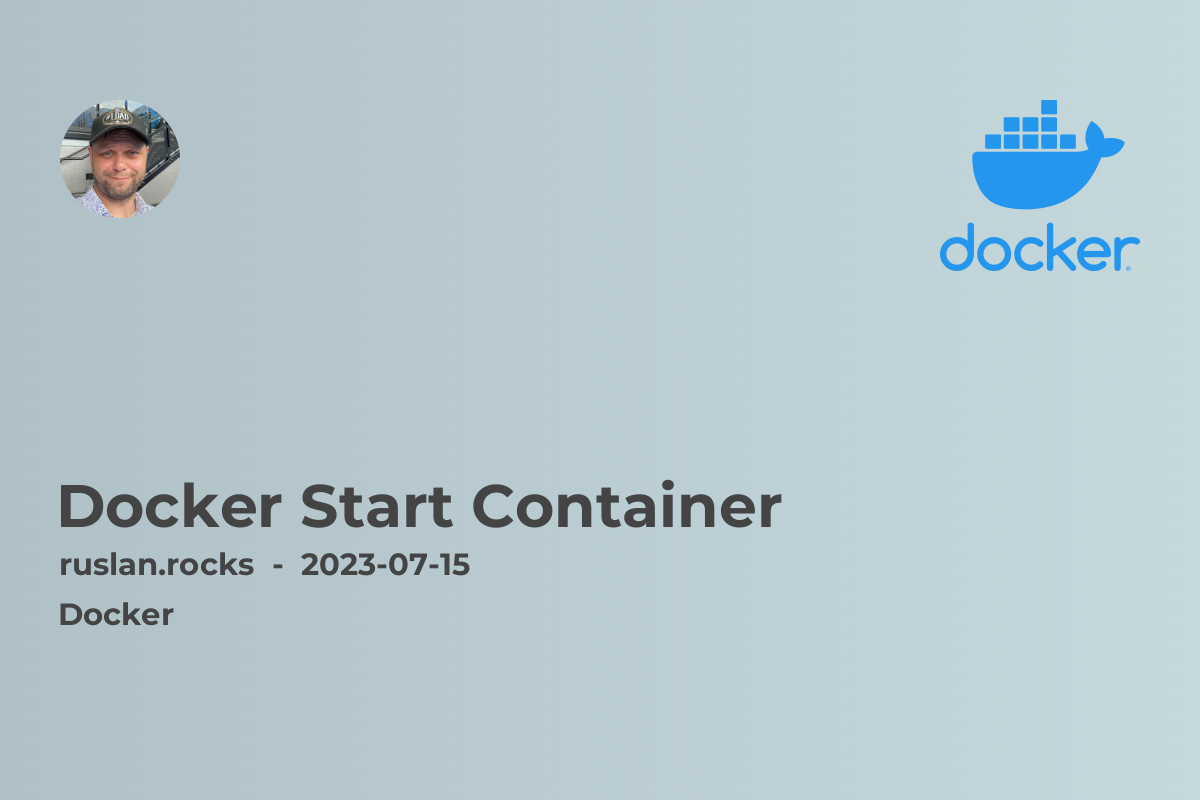
Starting a Docker Container
The process is straightforward and involves a few simple steps:
-
Pull the Docker Image: The first step is to pull the Docker image you want to run as a container. Docker images act as blueprints for containers and include all the necessary dependencies and configurations. You can pull images from the Docker Hub, a centralized repository of pre-built Docker images, or from your private image registry.
-
Run the Docker Container: Once you have the image, you can start a container from it using the
docker runcommand. This command creates and runs a new container based on the specified image. You can also configure various options with thedocker runcommand, such as setting environment variables, mapping ports, and specifying volumes. -
Interact with the Container: Congratulations! You have successfully started a Docker container. Now, you can interact with it just like any other running process. You can use the
docker execcommand to execute commands inside the container, attach to the container's shell, or even copy files to and from the container.
Starting a Docker container is as simple as that! However, there are a few additional tips and tricks that can enhance your Docker experience. Let's explore some of them.
Tips and Tricks for Docker
1. Docker Compose: Simplifying Container Orchestration
Docker Compose is a powerful tool for defining and orchestrating multi-container Docker applications. It allows you to describe your application's services, networks, and volumes in a YAML file, making it easy to spin up multiple containers with a single command. If you're working with complex applications that require multiple containers to interact with each other, Docker Compose is the way to go.
2. Managing Container Logs
As your application runs inside a Docker container, it generates logs that can provide valuable insights into its behavior and performance. You can retrieve these logs using the docker logs command. For example, docker logs <container_id> will fetch the logs generated by a specific container. You can also use options like --tail to limit the number of lines displayed or --follow to continuously stream the logs.
3. Scaling Docker Containers
One of the key benefits of Docker is its scalability. You can easily scale your application by running multiple instances of a container. Docker provides different strategies for scaling, such as using the docker-compose up --scale command or leveraging orchestration tools like Docker Swarm or Kubernetes for more advanced scenarios. Scaling your containers ensures that your application can handle increased traffic and load.
4. Docker Image Cleanup
Over time, you may accumulate a large number of Docker images and containers, taking up valuable disk space. It's important to regularly clean up unused images and containers to optimize storage usage. You can use the docker image prune and docker container prune commands to remove unused images and stopped containers, respectively. Remember to exercise caution and double-check before deleting any images or containers.
5. Inheriting Environment Variables
When running a container, you can specify environment variables using the -e flag with the docker run command. However, if you have a lot of environment variables or want to manage them in a separate file, you can use the --env-file option to load the variables from a file. This approach is particularly useful when deploying containers to different environments, as it allows for easy configuration management.
Expand Your Docker Knowledge
Starting a Docker container is just the beginning of your containerization journey. To further enhance your understanding and explore advanced Docker topics, here are some articles that you might find interesting:
- Managing Microservices with Docker Swarm and Kubernetes
- Docker vs Kubernetes: Which Container Orchestration Tool Should You Choose?
- Introduction to Containerization
- What Is Docker Compose?
- What Is Docker Swarm?
These articles delve deeper into container orchestration, comparing different tools, and providing valuable insights into various Docker concepts. Exploring these topics will give you a well-rounded understanding of Docker and its ecosystem.
In conclusion, starting a Docker container is a fundamental aspect of working with Docker. By following the simple steps outlined in this article and leveraging the tips and tricks provided, you'll be well on your way to becoming a Docker pro. Remember to continuously expand your knowledge and explore the vast world of containerization. Happy Dockerizing!
Note: For more articles on Docker and related topics, please visit our website.
